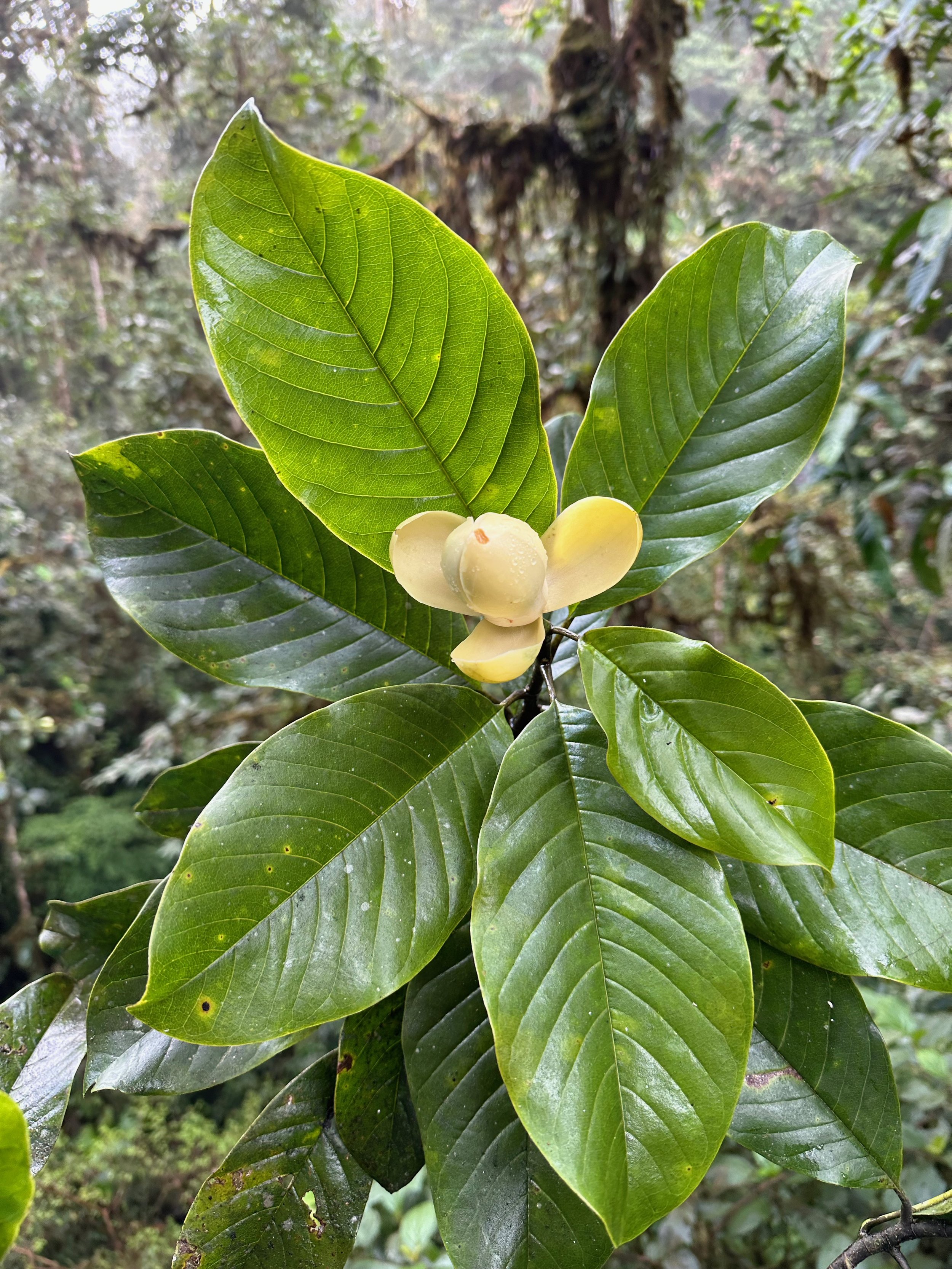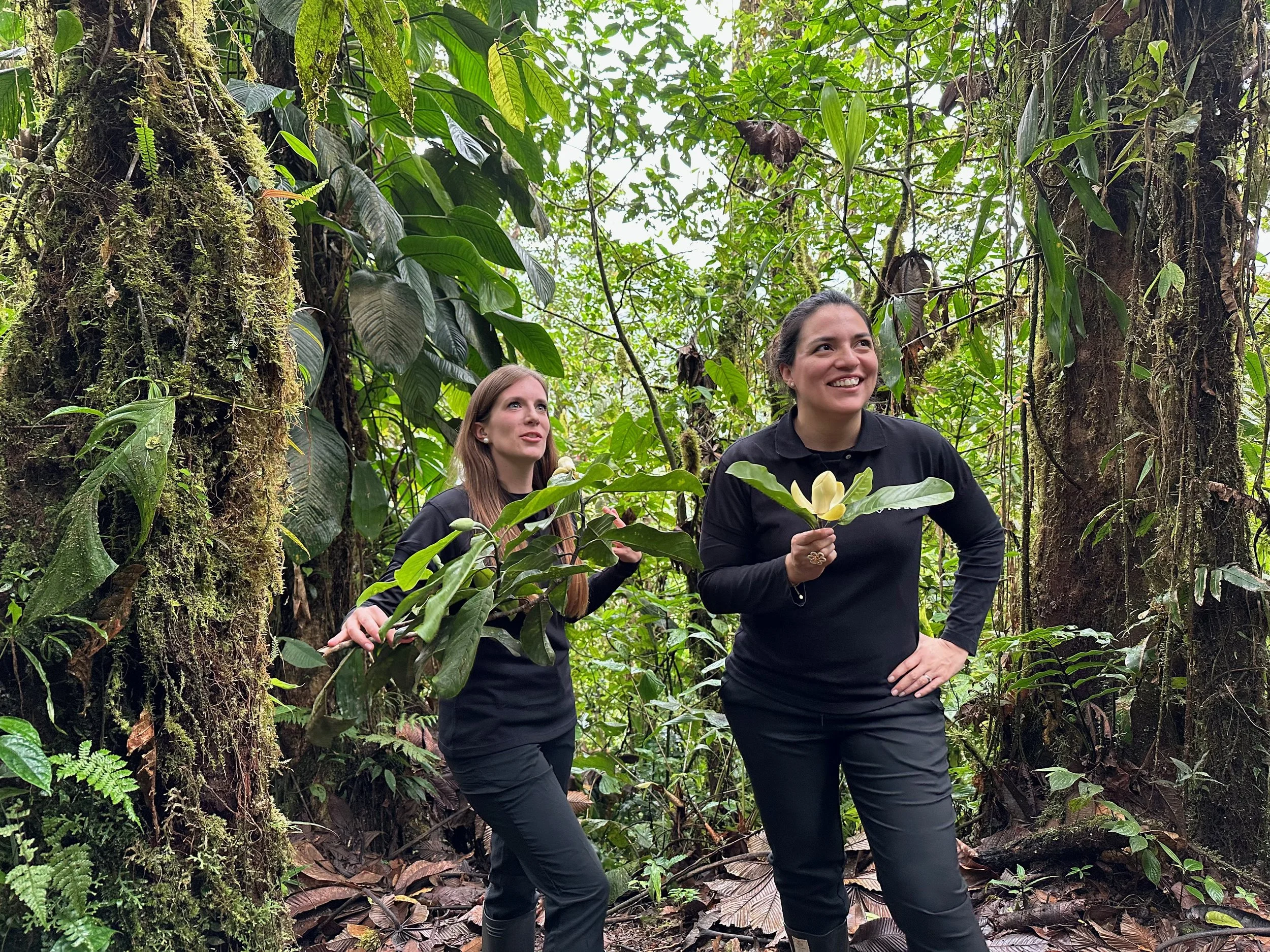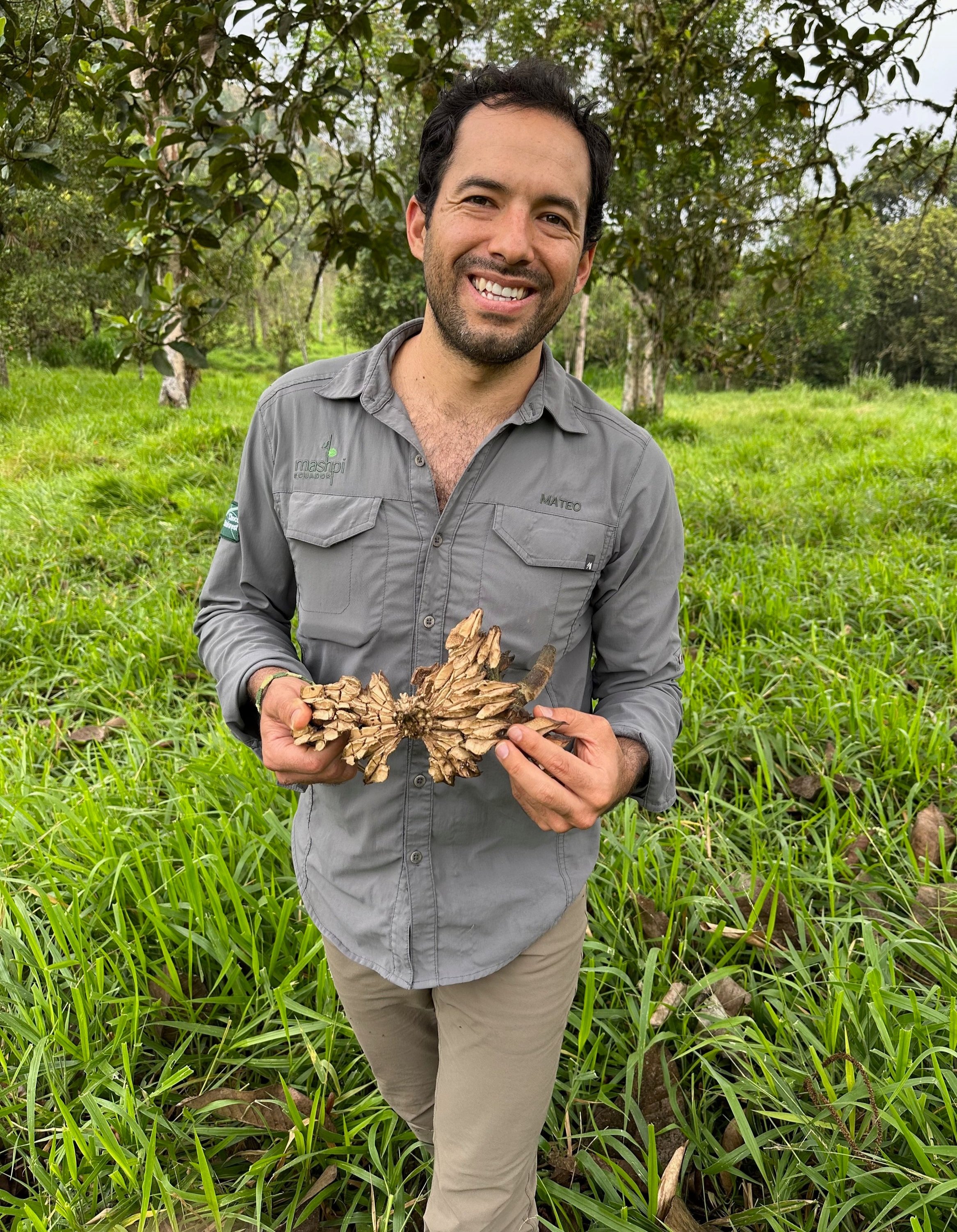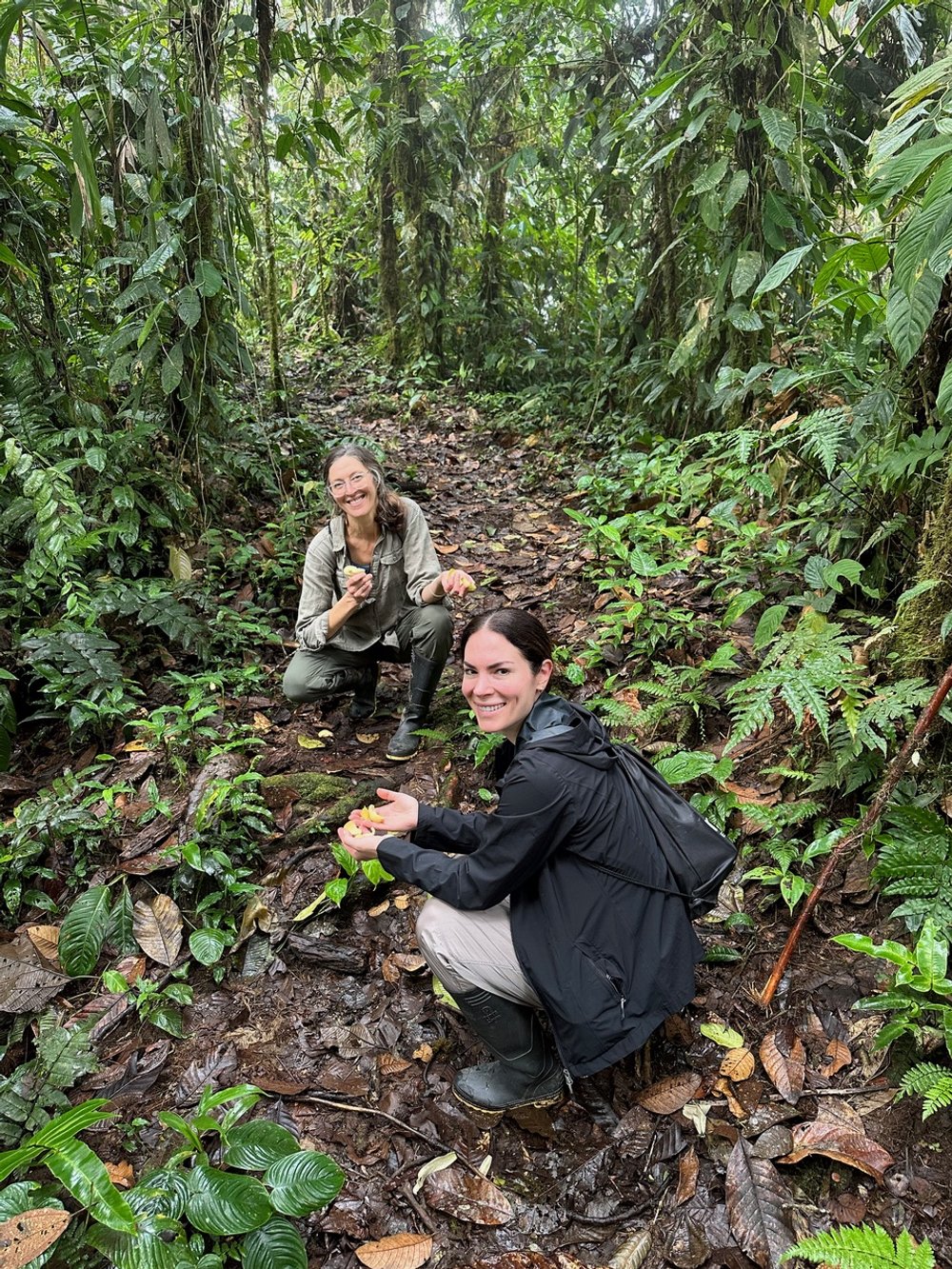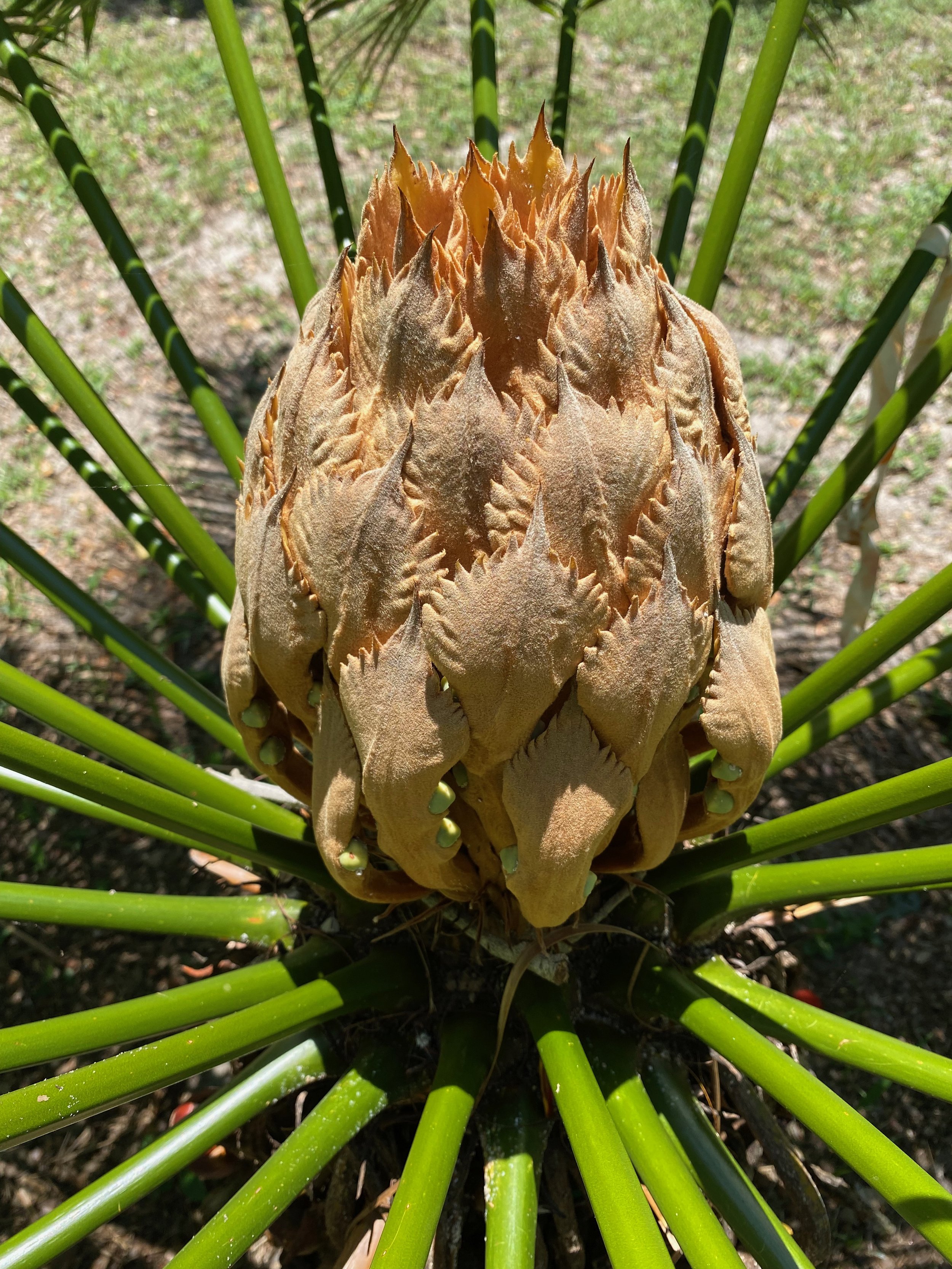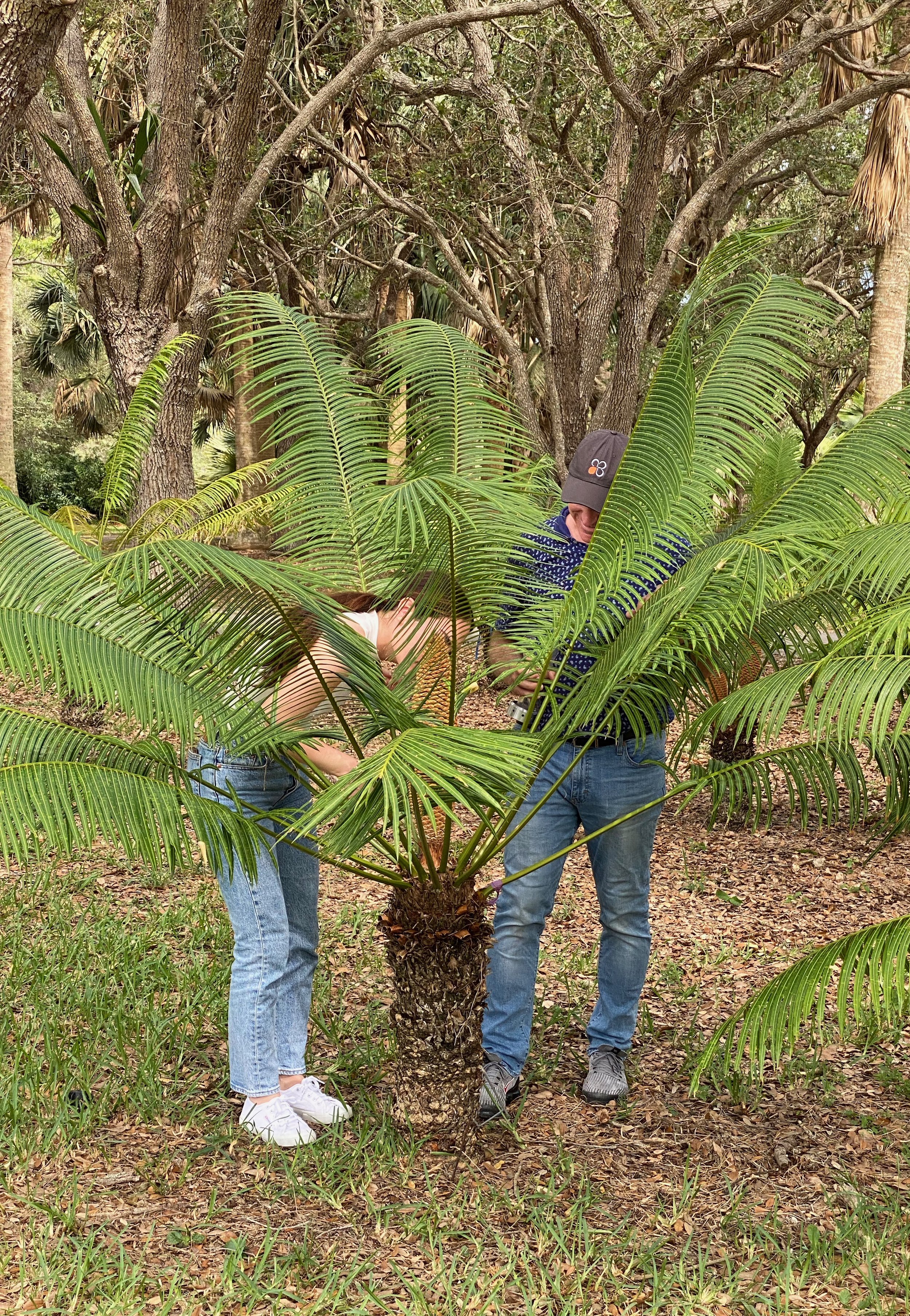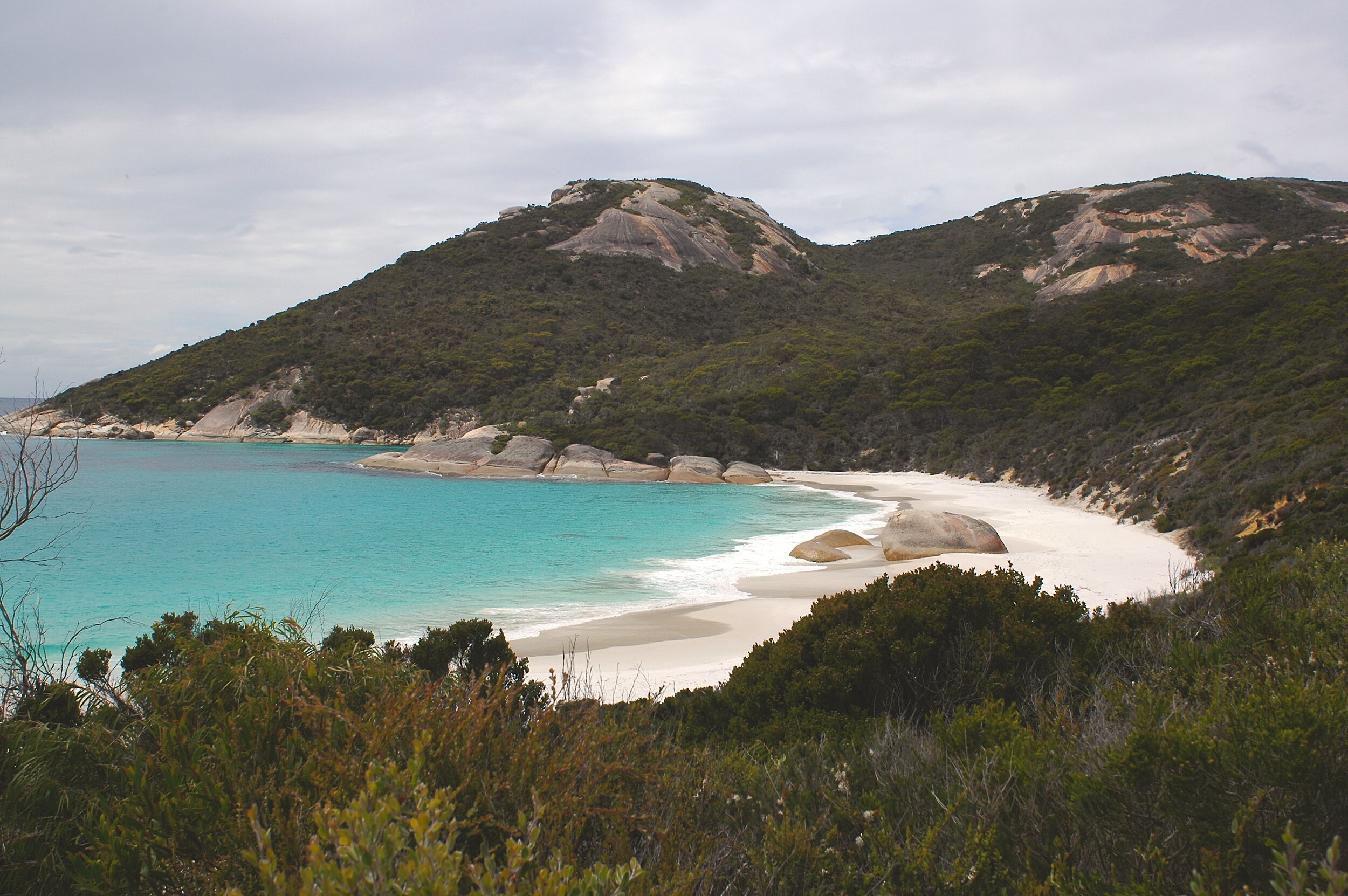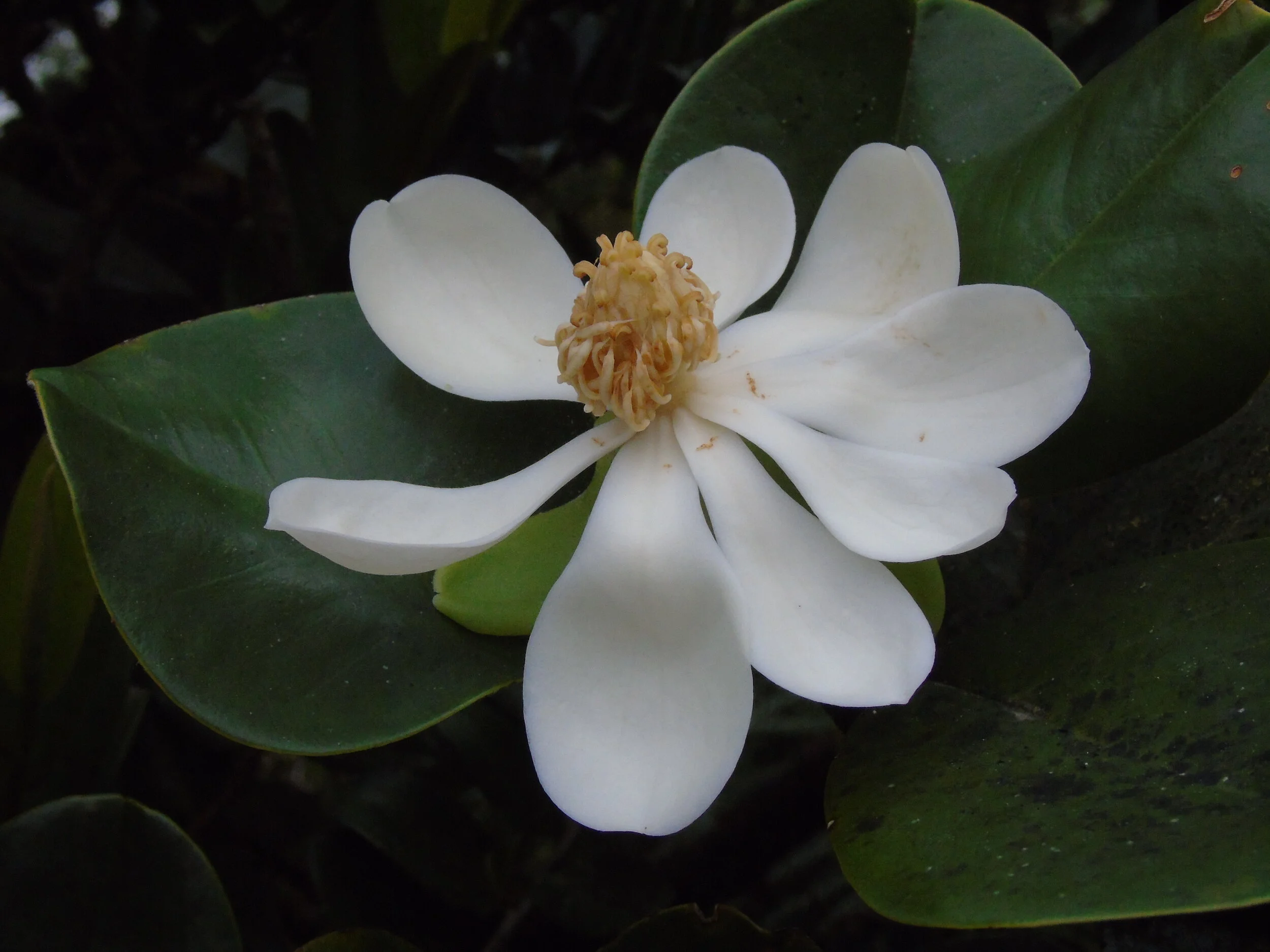IN THE NEWS
Featured Partner — Mane flavors and fragrance
TRLP BRAZIL INITIATES FIELD WORK WITH SEED FUNDING HELP FROM FRAGRANCE PARTNER BLOCKI PERFUME COMPANY
Brazilian Aromatherapy company Laszlo partners with TRLP
TRLP Launches Collaboration with Empório Laszlo in Brazil
Alliance for Zero Extinction – A Global Deal for Nature
TRLP Receives a Darwin Inititative Grant
Dr. Luiza F.A. de Paula JOINS TRLP as PROJECT SCIENTIST
TRLP’s collaboration with Mane flavors and fragrance produces two new fragrances to support conservation projects
TRLP is thrilled to have recently launched two new conservation partnerships and associated fragrances with MANE. In Ecuador, TRLP has teamed up with Mashpi Lodge & Reserve to support Magnolia conservation in the Chocó. The flagship species is Magnolia mashpi, a towering tree key to ecosystem dynamics. Befittingly, “mashpi” translates to “friend of water” in the local dialect; a description that also suits the ephemeral floral scent. Described by MANE perfumers as delicate, green, and sun-drenched, this evocative aroma has inspired their newest ingredient, Magnolia mashpi ID JUNGLE ESSENCE™.
In partnership with Montgomery Botanical Center (MBC), another remarkable plant with an equally intriguing scent is being championed: Cycas micronesica, the Pacific Cycad. Pacific Cycad is an imperiled species of cycad found on Guam and several neighboring islands in the Pacific. It is a member of a diverse and charismatic group of cone-bearing plants – resembling palms but related to pine trees. This is an ancient lineage; ancestors of modern cycads dominated the earth’s forests when the dinosaurs roamed. The fragrant cones of Pacific Cycad have an enticing, tropical fruit scent; the inspiration for MANE’s Pacific Cycad ID JUNGLE ESSENCE™.
Both Mashpi and MBC have been awarded initiation grants to support conservation actions for their focal species. In addition, a percentage of proceeds from sales of the associated fragrances will help sustain long term action to address threats and prevent ongoing population declines.
In the Chocó, current Magnolia threats include land-use change, and large-scale mining; both of which are rapidly degrading and fragmenting this unique bioregion. Current estimates suggest that only 5% of the original habitat is intact. Fortunately, regional initiatives are now focused on protecting and regenerating what remains. A central objective is to establish connectivity corridors linking Mashpi Reserve to other forests. These corridors are essential for maintaining ecological continuity and gene flow, key elements in preserving healthy habitat. However, further research is needed to define the optimal route for these corridors. The science team at Mashpi is contributing their efforts in this realm, including work to assess population status and dynamics of three Magnolia, M. mashpi, M. chiguila, and M. mindoensis. In parallel, propagation protocols for the magnolias and other endemic species will be developed with the aim of creating native plant nurseries in communities adjacent to the reserve.
The plight of the Pacific Cycad is a different tragedy. Once a dominant feature of the vegetation of Guam and adjacent islands, a devastating insect invasion rapidly decimated these beautiful cycad forests. Today only a fraction of the original wild plants remains. Fortuitously, a small group of dedicated scientists foresaw the potential for this catastrophe and began making conservation seed collections for ex situ cultivation. Today the most significant ex situ population is stewarded by MBC, a global leader in cycad conservation and research. Currently over 100 mature plants are thriving at MBC and, notably, represent diversity that has been completely lost in the wild. This sad reality presents an exciting possibility – to utilize this collection as an “insurance policy” against extinction. The conservation project that is unfolding begins with assessment of extant genetic diversity – both what remains in the wild and in conservation collections like that at MBC. The next stage entails augmentation of living collections (to ensure extant diversity is comprehensively “backed-up”) while simultaneously commencing reintroduction. The latter relies on ex situ collections for production of seed and seedlings for outplanting in native habitat; the critical first step in a long-term effort to restore what has been lost in the wild.
Both TRLP and MANE are honored to support the vital work of these plant conservation champions!
TRLP Brazil initiates field work with seed funding help from fragrance partner Blocki Perfume Company
August 5, 2023 — Over the past six months, The Red List Project lead Brazilian scientist Dr. Luiza de Paula, began the field work required to determine whether the endangered Brazilian lily, Alstroemeria caryophyllaea (Alstroemeriaceae), still persists in the wild as viable populations. Only a handful of field collections have ever made of this rare species, represented as herbaria specimens in botanical gardens and universities worldwide. In order to prepare an assessment of endangerment for the International Union for the Conservation of Nature (IUCN) Red List of Threatened Species, the current geographic extent of the plant must be verified and accurately mapped.
In March 2023, Luiza traveled to the Atlantic Forest Research and Conservation Alliance's (ARAÇÁ) Sítio Bacchus field station, a new research center established and managed by The Antonelli Foundations. Aided by staff from ARAÇÁ, Luiza explored the Atlantic Forest reserve over several days. While she did not find the rare Alstroemeria, instead, our field team located the more common but similarly poorly known, A. cunha.
On her way home to Belo Horizonte, Luiza met up with friend and fellow botanist, Dr. Claudio Nicoletti de Fraga, a renowned expert of Brazilian flora at the Instituto de Pesquisas, Jardim Botânico Rio de Janeiro. The two were able to quickly find an extant population of the Brazilian Lily on the outskirts of Rio de Janeiro.
A few months later, in July 2023, Dr. de Paula was joined in a second expedition by two graduate students from her home base at the Universidade Federal de Minas Gerais (UFMG), as well as Dr. Fraga. Over the course of 10 days, the field crew visited four sites — Alto Mourão in Serra da Tiririca State Park, Campos dos Goytacazes in the northern region of the state of Rio de Janeiro, Niterói, and Sugarloaf Mountain, the famous inselberg of Rio de Janeiro.
Success! Healthy populations of the Brazilian lily were found, in both flower and fruit. With benefit of permit, collections were made of several live plants and tubers (underground storage organs) to document these populations. An additional trip in 2023 is planned to collect seed for ex situ storage in the UFMG seed bank and for germination trials.
Field work is the first step in many more to come to develop a conservation strategy that ensures the long-term viability and survival of this beautiful threatened species. With immense gratitude to Tammy and Tyler Kraemer of Blocki Perfumes, our entire TRLP field team, and our collaborating Brazilian conservation partners, we are profoundly hopeful that our model of conservation science + fragrance art can help save our precious biological heritage.
Brazilian Aromatherapy company Laszlo partners with TRLP
October 28, 2021 — TRLP has launched a collaboration with LASZLO, a Brazilian Aromatherapy company offering 100% pure essential oils, and essential oil-based products. LASZLO also supports a publishing arm and a gourmet line of chocolates, aerosols, and probiotics. Founded in 2000 by Fábián Laszlo Flégner, LASZLO's mission is to provide "products and information that lead people to awareness and physical/mental/spiritual well-being," and to maintain "the highest degree of excellence and quality in the work carried out, with social responsibility, respect for others and the environment."
The partnership will be led in-country by TRLP scientist, Dr. Luiza F.A. de Paula of the University of Minas Gerais, with whom LASZLO also has a formal collaboration to ensure purity and quality in the manufacture of its essential oils. The inaugural conservation collaboration between TRLP and LASZLO will be focused on the endangered Griffinia gardneriana, one of the uncommon amaryllids restricted to the Caatinga, a uniquely Brazilian dry forest biome. This rare species is known for its fragrant "big bang" flowering, a phenomenon whereby most individuals in a single population flower on the same day. Griffinia gardneriana is nocturnal, so when this extravagant simultaneous flowering occurs, the evening air is filled with a heavenly floral scent.
BARUTI PERFUMES Releases First commercial fragrances generated in partnership with TRLP
October 1, 2021 — Dr. Spyros Drosopoulos, founder of Baruti Perfumes, is a renowned fragrance artist and a passionate advocate for plant conservation. He was introduced to The Red List Project by our San Francisco-based fragrance partner, Ineke Rühland, herself a pioneer of artisanal perfumery.
The Red List Project's approach resonated deeply with Spyros. He loved the premise of creating socially responsible fragranced products based on the scents of threatened plants... and of directing profits to support efforts to conserve these very species. In short, Spyros was a natural partner for The Red List Project!
Our partnership kick-off was befittingly botanical. Spyros made a journey to California in 2018, during which he and the TRLP team explored the scents of myriad rare species at regional gardens. Subsequently, Spyros travelled to Mt Pizzuta in Sicily and joined a team of University of Palermo scientists (and TRLP conservation partners) to visit highly threatened plants in habitat.
These trips inspired the creation of two new Baruti scents based upon the floral profiles of Portlandia platantha from Jamaica and Viola ucriana from Italy; both IUCN Redlisted as 'critically endangered'. Baruti just released these fragrances as a pair of room sprays, Portlandia and Palermo Violet. These ambient scents are wonderful expressions of these special plants – the Portlandia is rich and sophisticated; the Palermo Violet, fresh and bright, evocative of a warm afternoon along the Mediterranean. Both are now on sale at Baruti's Online Shop.
Fifty percent of proceeds from the sale of these products will go directly to our in-country partners to support conservation of these imperiled species. Portlandia platantha is being stewarded by the Natural History Museum of Jamaica and this funding will fuel their work to document distribution and genetic diversity of the remaining wild plants. Professor Lorenzo Gianguzzi and his research team at the University of Palermo will continue their work on the life history of Viola ucriana and conduct attendant monitoring. This will help ensure that the remaining populations on Sicily’s 1214m high Mt Pizzuta remain healthy.
TRLP is honored to work with a perfumer as talented and visionary as Spyros, and we hope to continue this conservation collaboration for many years to come!
TRLP Joins the Alliance for Zero Extinction to Prevent the loss of global biodiversity
September 26, 2021 — This past month, The Red List Project formally joined the Alliance for Zero Extinction, a consortium of NGOs and IUCN commissions dedicated to biodiversity conservation around the globe. The Alliance was launched in 2005 to "... identify, effectively conserve and safeguard the most important sites for preventing global species extinctions." More than 100 conservation organizations from around the globe, including many of TRLP's conservation partners, are members of the Alliance.
To date, the Alliance has identified more than 850 locations that support remnant populations of endangered or critically endangered species found in the IUCN Red List. These locations have been identified as essential for the persistence of the world's more imperiled species. To date, the Alliance has focused on vertebrate taxa, but TRLP stands ready to provide conservation expertise for ecosystem stewardship, including restoration of endangered flora. For more information, check out the AZE website.
Photo courtesy of P.L. Fiedler: Two Peoples Bay Nature Reserve, Western Australia, an AZE site identified to protect the critically endangered Gilbert's Potoroo (Potorous gilberti).
TRLP Awarded Darwin Initiative Partnership Grant for Conservation Efforts in the Greater Antilles
July 24, 2021 — The Red List Project (TRLP) has been awarded a Partnership Grant by the Darwin Initiative. The Darwin Initiative is a UK government (Department for Environment, Food and Rural Affairs) grants program dedicated to assisting locally based projects focused on protecting biodiversity and the natural environment. TRLP's proposal, Community-based Conservation of Endangered Flora in the Greater Antilles, is focused on working with in-country NGOs to address plant conservation in Cuba, Haiti, and the Dominican Republic. Our NGO partners include Planta! (Cuba), Haiti National Trust, and Fundación Progresso (Dominican Republic).
TRLP's project is centered on the Caribbean for several reasons. Islands are hotspots of biological, geological, and cultural diversity, supporting many of the most heavily modified ecosystems and threatened species in the world. The majority of documented extinctions has been on islands. Moreover, climate change is a singular threat to islands where habitats are often fragmented, leaving few options for migration or habitat shift. These challenges are writ large in the Greater Antilles, a Caribbean region particularly rich in natural history, but in peril from increasingly severe weather events and habitat degradation.
Myriad native plant species are under threat in the Greater Antilles and, while protection of this floristic biodiversity is an overarching objective, the TRLP Partnership Project focuses on conservation of Magnolia, an ancient lineage with an inordinate number of endangered taxa. The most recent IUCN assessment (2016) identifies 75% of Neotropical Magnolia as under threat, and notes that many species are poorly represented (or entirely absent) from formal ex situ collections. Ten such species are found in the Greater Antilles (5 EN, 5 CR).
For the Partnership Project, TRLP and Partners will
• Solidify the Greater Antilles project through a series of in-country planning meetings with team leaders and community stakeholders
• Review and assess existing propagation facilities and associated NGO infrastructure
• Make field visits to survey extant populations of target species and assess reintroduction location(s)
• Collaborate to prepare a DI Main Project proposal.
Given the political instability and devastation by natural disasters in the region, field work this fall will be postponed. TRLP project scientists hope to travel to the Greater Antilles in early spring 2022.
Photo courtesy of Fundación Progressio: Magnolia domingensis.
Dr. Luiza F.A. de Paula JOINS TRLP as PROJECT SCIENTIST for Brazil
March 2021 — The Red List Project is delighted to announce the addition of Dr. Luiza F.A. de Paula to the core team of conservation scientists. Luiza was born in Teófilo Otoni, Brazil, and studied Biology at Federal University of Minas Gerais, Belo Horizonte (Brazil), with emphasis on Environmental Sciences (2007-2012). Her bachelor's thesis, Floristic composition and biological spectrum of an inselberg in Teófilo Otoni, Mucuri Valley, Minas Gerais, began her professional focus on the evolution of inselberg floras. From 2012-15, Dr. de Paula completed her Master's degree in Plant Biology with specialization on Morphology, Systematics & Plant diversity, with the thesis entitled Plant communities on inselbergs: floristic and functional aspects. She obtained a PhD in Botany at University of Rostock (Germany) (2015-2019), characterizing the floristic, phytogeographic and ecological characterization of Brazilian inselbergs. To complete her doctoral research, Luiza conducted field work on inselbergs in southeastern Brazil, collaborating with the Rio de Janeiro Botanical Garden (Brazil), São Paulo State University (Brazil) and Vrije Universiteit Brussel (Belgium).
Dr. de Paula expertise ranges across the botanical sciences, with emphasis on floristics and community ecology, including functional ecology, patterns of species diversity, biogeography, conservation genetics, natural history, ecology and conservation of vegetation associated to insular habitats (especially inselbergs). She is a member and founder of the Inselberg Research Initiative. Her first post doctoral fellowship was based at the Federal University of Minas Gerais (Brazil), where she worked on a Cyber-flora project involving the Caatinga vegetation of a conservation unit named ESEC-Seridó (Rio Grande do Norte state, NE-Brazil). Currently, she is a postdoctoral fellow at the Federal University of Minas Gerais working in a project that seeks to investigate the diversity, origin, and evolution of the tropical inselberg flora. Luiza also maintains a blog dedicated to scientific public outreach.
Photo courtesy of Luiza F.A. de Paula


